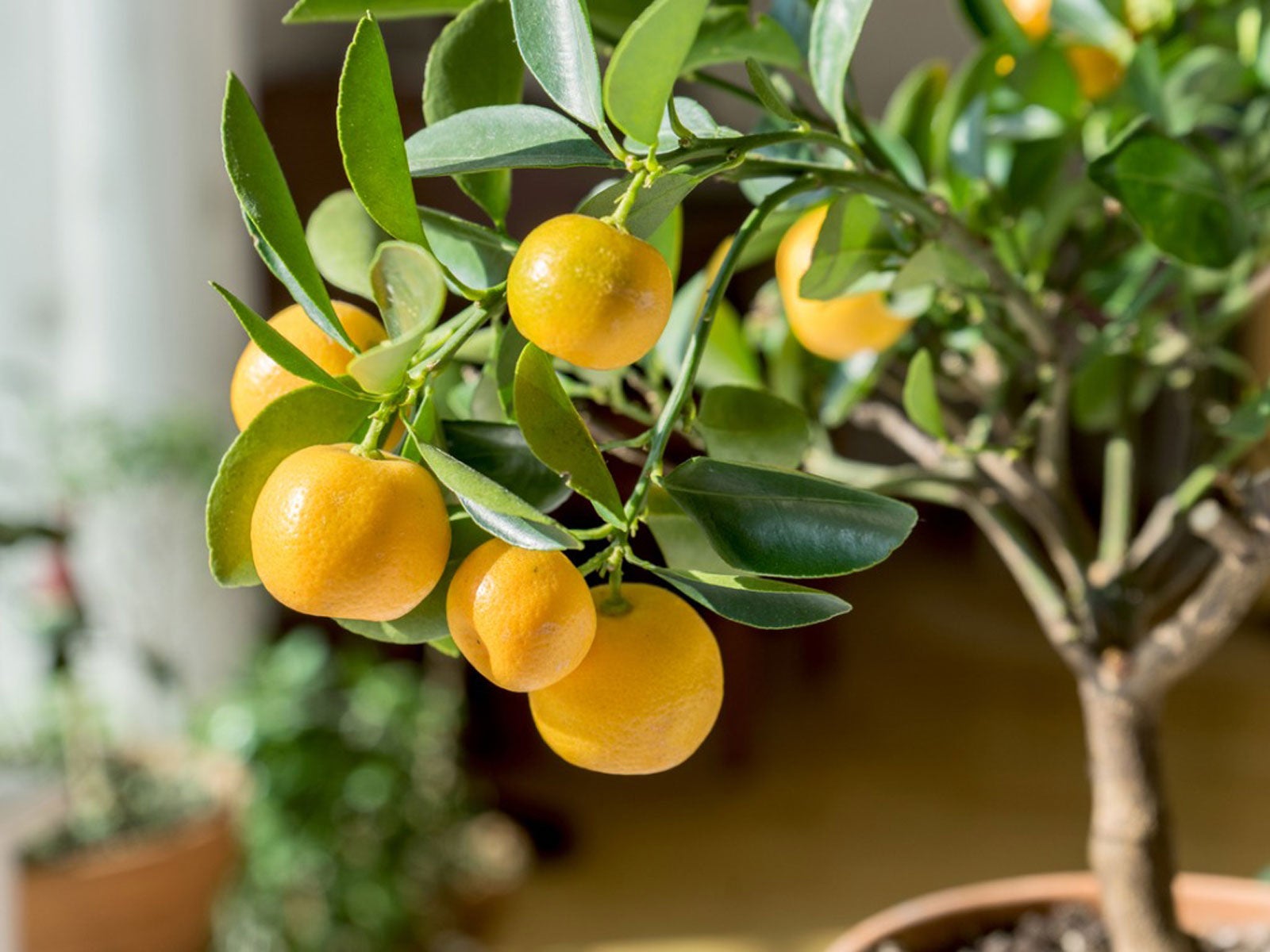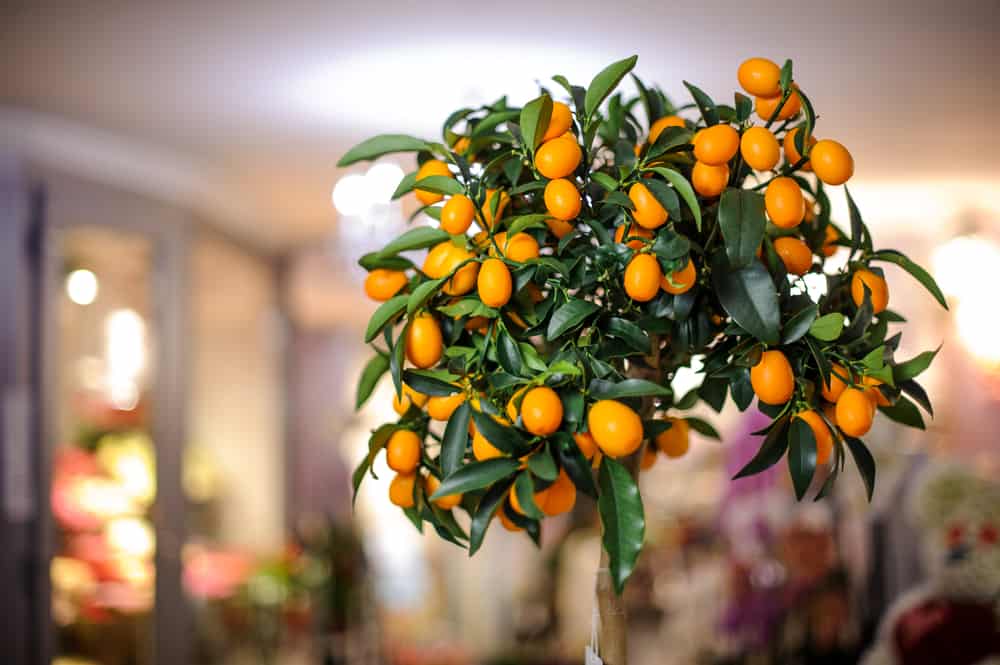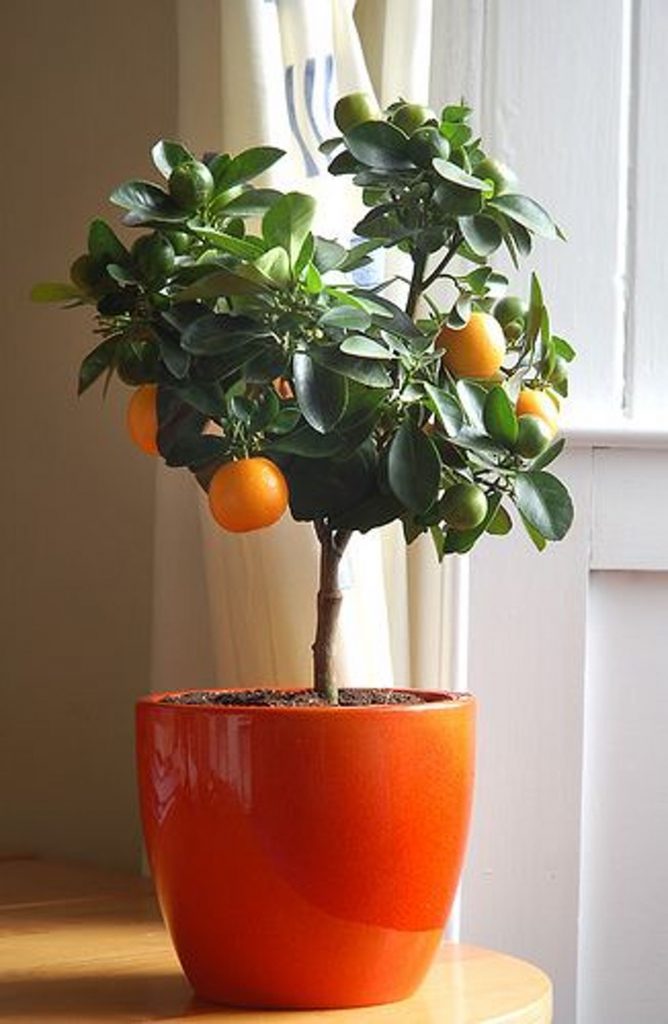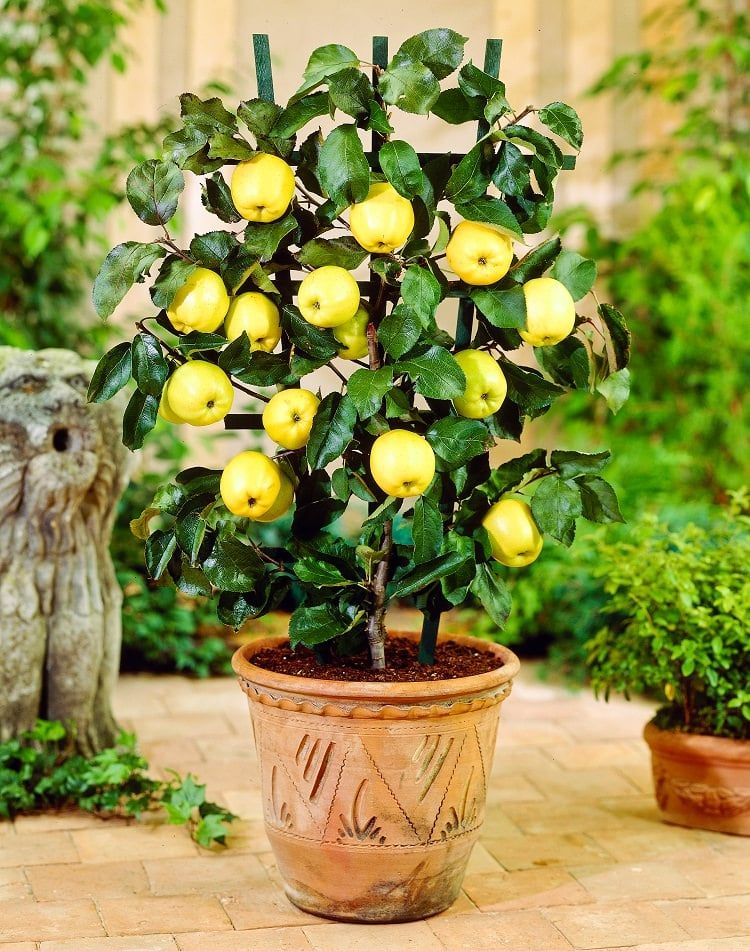Growing fruit trees indoors can be a fulfilling hobby that brings a slice of nature into your home. Imagine picking a fresh lemon or juicy fig from your living room! Indoor fruit tree gardening offers the joy of fresh produce and a touch of greenery to brighten any space. Let’s dive into the world of indoor fruit tree cultivation and explore the endless possibilities it holds.
Benefits of Indoor Fruit Tree Gardening
Cultivating fruit trees indoors is more than just a hobby; it comes with numerous benefits:
| Benefit | Description |
|---|---|
| Year-Round Harvest | Enjoy fresh fruit throughout the year, regardless of the season. |
| Pest Control | Indoor environments are easier to monitor and control for pests. |
| Space Efficiency | Dwarf and compact varieties fit well in small spaces, perfect for urban dwellers. |
| Aesthetic Appeal | Adds beauty and greenery to your living space. |
| Air Quality Improvement | Plants help purify the air, creating a healthier indoor environment. |
Selecting Suitable Fruit Tree Varieties for Indoor Cultivation
Choosing the right fruit tree variety is crucial for successful indoor gardening. Not all fruit trees thrive indoors, so selecting the appropriate types is essential.
Dwarf and Compact Fruit Tree Varieties
Dwarf and compact varieties are ideal for indoor cultivation due to their manageable size and productive nature.
| Fruit Tree | Description | Ideal Conditions |
|---|---|---|
| Dwarf Lemon Tree | Produces full-sized lemons on a compact tree. | Bright light, well-draining soil |
| Fig Tree | Grows well indoors and produces sweet figs. | Moderate light, consistent watering |
| Dwarf Apple Tree | Small in size but yields full-sized apples. | Full sun, rich soil |
| Avocado Tree | Slow-growing, perfect for pots, yields creamy avocados. | Bright light, regular feeding |
| Dwarf Banana Tree | Thrives indoors and produces edible bananas. | High humidity, bright light |
Considerations for Climate and Space Constraints
When selecting a fruit tree, consider the climate of your indoor space and the available area for the tree to grow.
| Consideration | Importance | Example Solutions |
|---|---|---|
| Light Availability | Essential for photosynthesis and fruit production. | Place trees near south-facing windows. |
| Space Constraints | Ensure enough room for the tree’s growth and root expansion. | Choose dwarf or compact varieties. |
| Temperature Control | Maintain a stable indoor temperature suitable for the chosen fruit tree variety. | Use indoor heaters or coolers as needed. |

Source Image: www.gardeningknowhow.com
Choosing the Right Container for Indoor Fruit Trees
Selecting the appropriate container is vital for the health and growth of your indoor fruit trees.
Types of Containers Suitable for Indoor Gardening
Containers come in various materials and sizes, each with its own benefits.
| Container Type | Description | Pros | Cons |
|---|---|---|---|
| Terracotta Pots | Porous material that allows air and moisture to pass through. | Good aeration, traditional look | Can dry out quickly, heavy |
| Plastic Pots | Lightweight and non-porous, retaining moisture well. | Easy to move, retains moisture | Less aeration, can overheat roots |
| Fabric Pots | Soft-sided pots that allow for air pruning of roots. | Excellent drainage, promotes healthy roots | Can dry out quickly, less stable |
| Ceramic Pots | Glazed pots with a decorative finish, often with drainage holes. | Attractive, good moisture retention | Heavy, can be expensive |
| Self-Watering Pots | Include a reservoir to provide consistent moisture to the plant. | Convenient, reduces watering frequency | Can lead to overwatering, more expensive |
Proper Drainage and Size Considerations
Proper drainage is essential to prevent root rot, and the container size should accommodate the tree’s growth.
| Consideration | Description |
|---|---|
| Drainage Holes | Ensure pots have adequate drainage holes to prevent waterlogging. |
| Container Size | Choose a pot that is slightly larger than the tree’s root ball to allow for growth. |
| Saucer Use | Use saucers to catch excess water, but ensure they don’t cause the roots to sit in water. |
Selecting the Ideal Location for Indoor Fruit Trees
The location of your indoor fruit tree can significantly impact its health and productivity.
Sunlight Requirements for Fruit Tree Growth
Fruit trees need plenty of sunlight to thrive and produce fruit.
| Light Requirement | Description | Example Fruit Trees |
|---|---|---|
| Full Sun | Requires at least 6-8 hours of direct sunlight daily. | Lemon, Lime, Avocado |
| Partial Sun | Needs 4-6 hours of direct sunlight or bright, indirect light. | Fig, Olive, Dwarf Apple |
| Low Light | Can tolerate lower light conditions, but may have reduced fruit production. | Some fig varieties, certain citrus trees |
Providing Adequate Air Circulation
Good air circulation helps prevent mold, mildew, and pest issues.
| Consideration | Description |
|---|---|
| Spacing | Keep trees spaced apart to ensure air can flow freely around each plant. |
| Ventilation | Use fans or open windows to enhance air circulation. |
| Avoid Clutter | Avoid placing trees too close to walls or other obstacles that can block airflow. |

Source Image: fruitsgardener.com
Soil and Potting Mix for Indoor Fruit Trees
The right soil and potting mix can make a significant difference in the growth and health of indoor fruit trees.
Characteristics of Well-Draining Potting Mixes
A well-draining potting mix is crucial to prevent root rot and ensure healthy growth.
| Characteristic | Description |
|---|---|
| Light Texture | Should be light and airy to allow roots to breathe. |
| Organic Matter | Include compost or peat moss to provide nutrients. |
| Drainage Materials | Perlite or vermiculite helps improve drainage and prevent waterlogging. |
Adding Amendments for Nutrient-Rich Soil
Enhance your potting mix with amendments to provide a nutrient-rich environment.
| Amendment | Benefit | Application |
|---|---|---|
| Compost | Provides essential nutrients and improves soil structure. | Mix into the potting soil before planting. |
| Bone Meal | Adds phosphorus for strong root development. | Sprinkle a small amount into the soil. |
| Fish Emulsion | Rich in nitrogen, promotes leafy growth. | Dilute and water the tree every few weeks. |
Planting and Potting Indoor Fruit Trees
Proper planting techniques are vital for the successful establishment of your indoor fruit trees.
Proper Planting Depth and Technique
Planting your fruit tree at the right depth ensures healthy root development and stability.
| Step | Description |
|---|---|
| Prepare the Pot | Fill the pot with well-draining potting mix, leaving space for the root ball. |
| Position the Tree | Place the tree in the pot, ensuring the root crown is level with the soil surface. |
| Backfill Soil | Fill in around the roots with soil, gently firming it down to eliminate air pockets. |
| Water Thoroughly | Water the tree well to help settle the soil around the roots. |
Transplanting Young Fruit Trees into Containers
Transplanting young trees requires care to avoid damaging the roots.
| Step | Description |
|---|---|
| Choose the Right Time | Transplant in spring or early summer when the tree is actively growing. |
| Handle with Care | Gently remove the tree from its original container, avoiding root damage. |
| Re-pot Quickly | Place the tree in its new container promptly to minimize stress. |
| Water and Mulch | Water thoroughly and apply a layer of mulch to retain moisture. |

Source Image: gardeningsoul.com
Watering Indoor Fruit Trees
Watering is a critical aspect of indoor fruit tree care, ensuring they receive the right amount of moisture.
Frequency and Amount of Watering
Proper watering routines keep your trees healthy and productive.
| Frequency | Amount |
|---|---|
| Daily | Light watering, especially in hot or dry conditions. |
| Weekly | Deep watering to ensure thorough moisture penetration. |
| Variable | Adjust based on the tree’s specific needs and the indoor environment. |
Signs of Underwatering and Overwatering
Recognizing the signs of improper watering can help you adjust your care routine.
| Symptom | Cause | Solution |
|---|---|---|
| Wilting Leaves | Underwatering | Increase watering frequency. |
| Yellowing Leaves | Overwatering | Reduce watering, ensure proper drainage. |
| Dry Soil | Underwatering | Water thoroughly, check soil moisture. |
| Soggy Soil | Overwatering | Improve drainage, reduce watering. |
Fertilizing Indoor Fruit Trees
Fertilizing provides essential nutrients to support the growth and fruit production of indoor fruit trees.
Types of Fertilizers Suitable for Indoor Use
Choose the right fertilizers to promote healthy growth and fruiting.
| Fertilizer Type | Description |
|---|---|
| Organic Fertilizers | Derived from natural sources such as compost, manure, or seaweed. |
| Slow-Release Fertilizers | Releases nutrients gradually over time, reducing the risk of over-fertilization. |
| Liquid Fertilizers | Quick-acting and easily absorbed by the plant, ideal for regular feeding. |
| Balanced Fertilizers | Contains a mix of essential nutrients in balanced proportions for overall health. |

Source Image: gardeningsoul.com
Feeding Schedule for Optimal Growth and Fruit Production
Establishing a regular feeding schedule ensures your indoor fruit trees receive the nutrients they need to thrive.
| Stage of Growth | Feeding Frequency | Recommended Fertilizer |
|---|---|---|
| Spring to Summer | Every 4-6 weeks | Balanced liquid fertilizer |
| Fall to Winter | Every 8-12 weeks | Slow-release fertilizer |
| During Fruiting | Every 2-4 weeks | Organic fertilizer with higher phosphorus content |
Pruning and Training Indoor Fruit Trees
Pruning is essential for maintaining the health, shape, and productivity of indoor fruit trees.
Pruning to Maintain Size and Shape
Regular pruning keeps indoor fruit trees manageable and promotes fruiting.
| Pruning Technique | Description |
|---|---|
| Remove Dead or Diseased Branches | Prune away any dead or diseased branches to prevent the spread of disease. |
| Thinning | Remove excess branches to improve airflow and light penetration within the canopy. |
| Heading Back | Cut back long branches to encourage branching and a more compact growth habit. |
Training Young Trees for Productive Growth
Training young trees helps establish a strong framework for future fruit production.
| Training Method | Description |
|---|---|
| Espalier | Train the tree to grow flat against a wall or trellis, maximizing space and light exposure. |
| Central Leader | Encourage a central trunk with evenly spaced lateral branches for balanced growth. |
| Open Center | Prune the tree to an open vase shape, allowing for ample light penetration and air circulation. |

Source Image: seedtocrop.net
Pollination Techniques for Indoor Fruit Trees
Pollination is essential for fruit set, especially in indoor environments where natural pollinators may be scarce.
Hand Pollination Methods
Hand pollination ensures fruit set by transferring pollen between flowers manually.
| Method | Description |
|---|---|
| Paintbrush | Gently transfer pollen from flower to flower using a small paintbrush or cotton swab. |
| Shake Method | Gently shake branches to dislodge pollen and encourage pollination within the canopy. |
| Air Blower | Use a small fan or air blower to simulate wind and aid in pollen transfer between flowers. |
Introducing Pollinator Plants or Insects
Introducing companion plants or beneficial insects can enhance pollination and fruit set.
| Method | Description |
|---|---|
| Companion Plants | Plant flowers that attract bees, such as lavender or borage, near your fruit trees. |
| Mason Bees | Provide nesting sites and shelter for solitary bees like mason bees to increase pollination. |
| Hand Pollination | Supplement natural pollination by hand-pollinating flowers using a paintbrush or similar tool. |
Managing Pest and Disease Issues in Indoor Fruit Tree Cultivation
Preventing and managing pests and diseases is crucial for maintaining the health of indoor fruit trees.
Common Pests and Diseases Affecting Indoor Fruit Trees
Identifying and addressing common issues helps prevent damage to your fruit trees.
| Pest/Disease | Description | Prevention/Treatment |
|---|---|---|
| Aphids | Small, sap-sucking insects that weaken the tree and transmit diseases. | Spray with neem oil or insecticidal soap. |
| Powdery Mildew | Fungal disease that appears as a white, powdery coating on leaves and stems. | Improve air circulation, treat with fungicide. |
| Spider Mites | Tiny pests that feed on plant sap, causing yellowing and webbing on leaves. | Spray with water or use predatory mites. |
| Scale Insects | Small, immobile insects that attach to stems and leaves, sucking sap from the plant. | Remove scales manually, spray with horticultural oil. |
Organic Pest Control Methods
Using natural and organic pest control methods helps protect indoor fruit trees without harmful chemicals.
| Control Method | Description |
|---|---|
| Neem Oil | Natural insecticide and fungicide derived from the neem tree. |
| Diatomaceous Earth | Fine powder that damages the exoskeleton of pests, causing dehydration and death. |
| Beneficial Insects | Introduce predatory insects such as ladybugs or lacewings to feed on pests. |
| Horticultural Oil | Suffocates pests and their eggs by coating them in oil, disrupting their respiratory system. |
Harvesting Indoor-Grown Fruits
Harvesting fruits at the right time ensures optimal flavor and quality.
Signs of Ripeness and Readiness for Harvest
Knowing when to harvest your fruits ensures you enjoy them at their peak ripeness.
| Fruit Type | Ripeness Indicators |
|---|---|
| Citrus Fruits | Bright color, firm texture, and fragrant aroma indicate ripeness. |
| Apples | Easily separates from the tree with a gentle twist and tastes sweet. |
| Figs | Soft texture, slight drooping, and dark color indicate ripeness. |
| Avocados | Slightly soft to the touch and easily yield to gentle pressure. |
| Bananas | Yellow color with brown spots and a sweet aroma signify ripeness. |
Proper Harvesting Techniques to Avoid Damage
Handle fruits with care to prevent bruising or damage during harvesting.
| Technique | Description |
|---|---|
| Use Pruning Shears | Cut fruits from the tree with sharp, clean pruning shears to prevent damage to the branches. |
| Handle Gently | Handle fruits delicately to avoid bruising or puncturing the skin. |
| Harvest Frequently | Harvest fruits as they ripen to ensure a continuous supply throughout the season. |

Source Image: www.pinterest.com
Overwintering Indoor Fruit Trees
Preparing your indoor fruit trees for winter ensures they survive and thrive during the colder months.
Winter Care Tips for Indoor Fruit Trees
Protect your trees from cold temperatures and dry air to prevent stress and damage.
| Care Tip | Description |
|---|---|
| Adjust Temperature | Keep indoor temperatures stable and above 50°F (10°C) to prevent cold damage. |
| Increase Humidity | Use a humidifier or misting system to maintain humidity levels around the trees. |
| Reduce Watering | Water less frequently during the winter months to prevent overwatering in cooler conditions. |
| Prune Dormant Trees | Prune away dead or diseased branches while the tree is dormant to promote healthy growth. |
Rotating Indoor Fruit Tree Locations
Rotating your indoor fruit tree locations helps promote balanced growth and prevents soil depletion and pest buildup.
Preventing Soil Depletion and Pest Build-Up
Regularly rotating your indoor fruit trees offers several benefits:
| Benefit | Description |
|---|---|
| Soil Health Improvement | Rotating trees prevents soil depletion by distributing nutrient uptake across different areas. |
| Pest and Disease Prevention | Moving trees disrupts pest life cycles and reduces the buildup of disease-causing organisms. |
| Balanced Growth Promotion | Ensures all parts of the tree receive adequate light and airflow, promoting balanced growth. |
Promoting Balanced Growth and Health
Rotating your fruit trees every few months ensures they receive uniform light exposure and airflow.
| Rotation Schedule | Description |
|---|---|
| Quarterly Rotation | Move trees to a different location every 3-4 months to ensure balanced growth and soil health. |
| Light Consideration | Place trees in areas with similar light conditions to prevent shock and ensure proper growth. |
Troubleshooting Indoor Fruit Tree Issues
Addressing common problems ensures your indoor fruit trees stay healthy and productive.
Identifying and Addressing Leaf Drop, Yellowing, or Browning
Leaf issues can signal various problems, from nutrient deficiencies to pests or diseases.
| Symptom | Possible Cause | Solution |
|---|---|---|
| Leaf Drop | Overwatering, underwatering, root rot, or environmental stress. | Adjust watering, check for root rot. |
| Yellowing Leaves | Nutrient deficiency, overwatering, or pest infestation. | Fertilize with balanced fertilizer, check for pests. |
| Browning Leaf Tips | Dry air, underwatering, over-fertilization, or salt buildup in the soil. | Increase humidity, adjust watering, flush soil. |
Resolving Growth Stunting or Lack of Fruit Production
Issues with growth or fruiting can stem from environmental factors or cultural practices.
| Issue | Possible Cause | Solution |
|---|---|---|
| Stunted Growth | Poor soil quality, insufficient light, over or under-watering, or root-bound plants. | Improve soil, adjust care routine, repot if root-bound. |
| Lack of Fruit | Improper pollination, nutrient deficiency, insufficient light, or inadequate pruning. | Hand-pollinate flowers, fertilize, ensure proper care. |
With these troubleshooting techniques, you can address issues promptly and ensure your indoor fruit trees thrive.
Cultivating fruit trees indoors is a rewarding endeavor that offers fresh, homegrown produce year-round. By selecting suitable varieties, providing proper care, and troubleshooting issues as they arise, you can enjoy a bountiful harvest of delicious fruits right from your own home. So, roll up your sleeves, grab your gardening tools, and embark on this delightful journey from pot to plate with indoor fruit tree cultivation!

